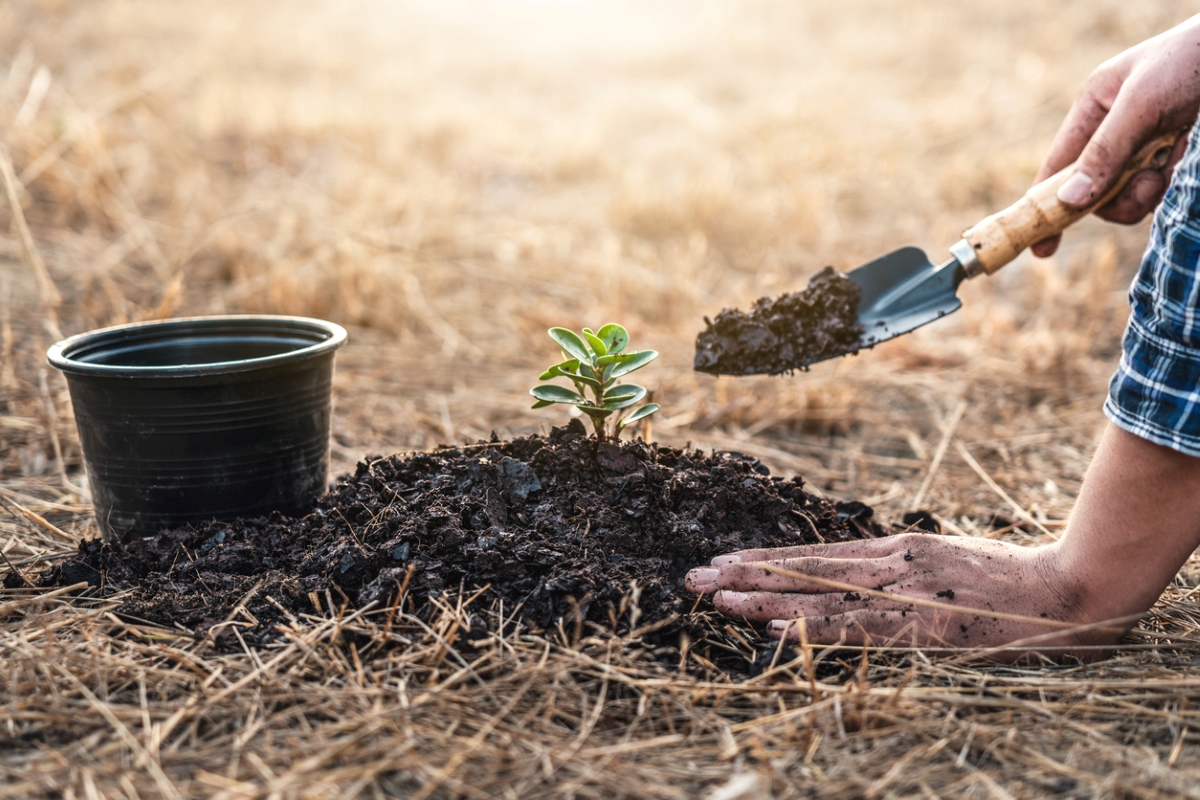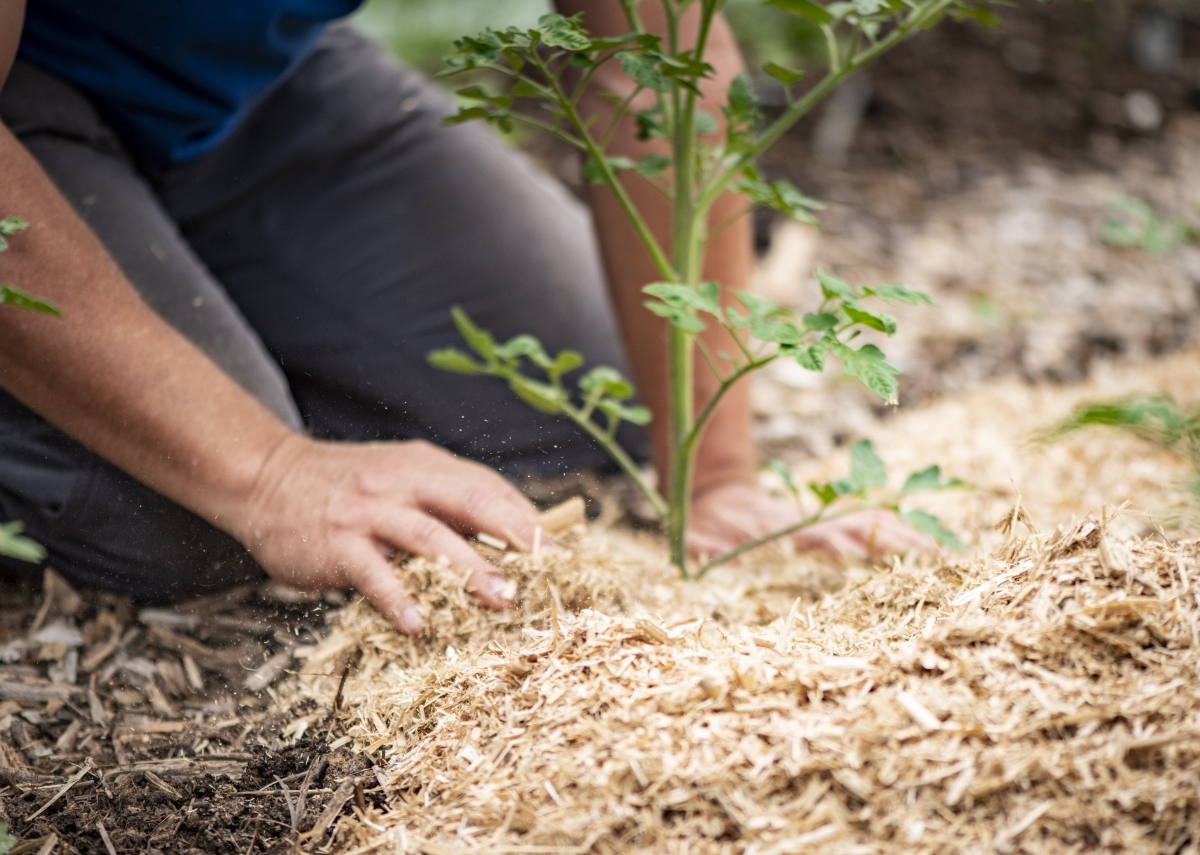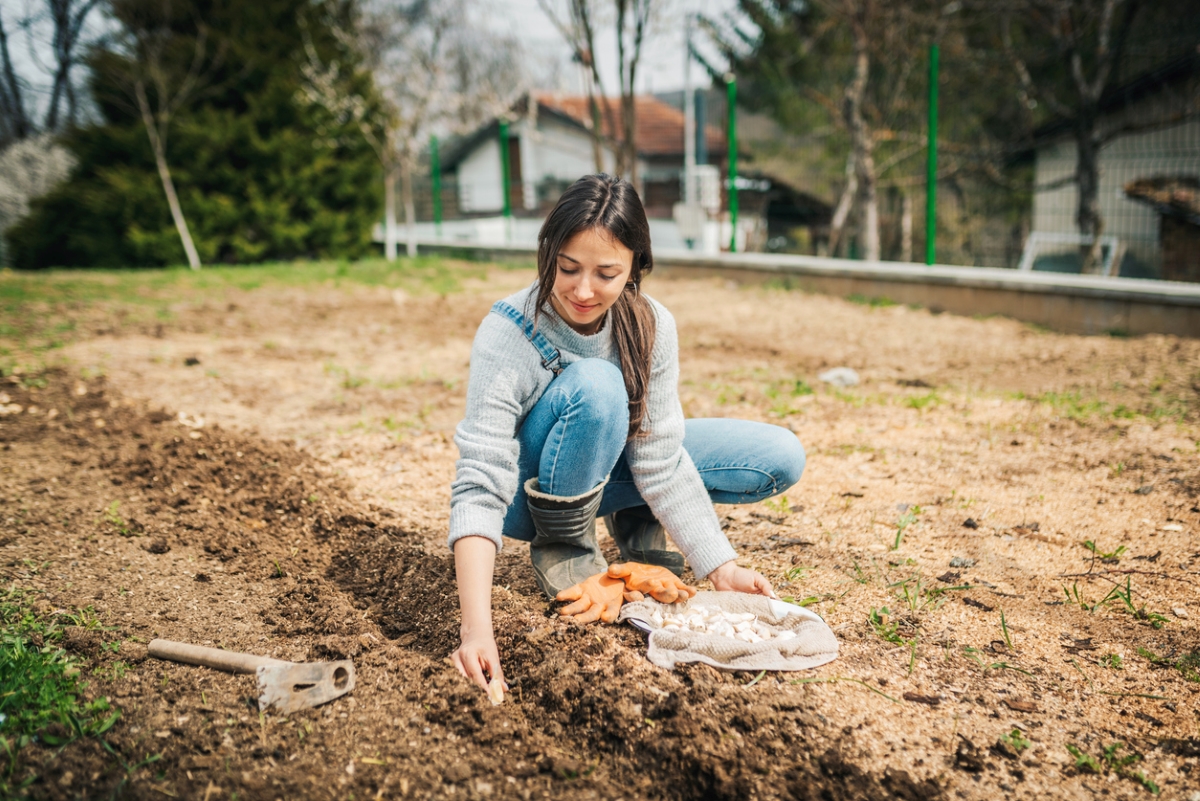We may earn revenue from the products available on this page and participate in affiliate programs. Learn More ›
Different types of soil come with their own unique sets of growing challenges, but sandy soil can be particularly difficult to garden in. Sandy soils are typically low in nutrients and they drain moisture too quickly for most plants. This can leave plant roots dry, create nutrient deficiencies, and affect the overall health of gardens.
If you’re struggling to grow vegetables, flowers, herbs, fruit, or grass in sandy soil, don’t despair! There are ways to improve even the sandiest gardens and adjust gardening techniques to work with the soil variety you have.

What Is Sandy Soil, Anyway?
Most edible and flowering plants grow best in loam or sandy loam soil types, which contain a balance of silt, sand, clay, and organic matter. But sandy soils are filled with an overabundance of gardening sand, which can make them drain too quickly and lose nutrients fast.
Garden sand is primarily made of tiny, weathered rocks and minerals, and individual sand grains are much larger than clay or silt particles. This allows water and nutrients to trickle away and leaves plants parched and nutrient deficient.
If you’re not sure what type of soil you have in your garden, you can have your soil tested at your local cooperative extension office or use a soil test kit. You can also perform a basic soil test by grabbing a handful of damp garden soil and squeezing it into a ball. If it crumbles easily and feels gritty to the touch, you’re likely dealing with sandy soil.
Pros and Cons of Gardening With Sandy Soil
Having sandy soil in garden beds can pose some problems, but sandy gardens have a few benefits, too.
Pros
- It drains quickly. Sand particles help water flow freely through soils, which is why sand is often added to potting mixes. But if your garden naturally contains a sand soil mix, your beds should drain quickly and you won’t need to worry much about waterlogged roots or root rot.
- You can plant earlier. Sandy soils warm up fast in spring, allowing you to plant cold-hardy crops a bit earlier.
- It’s loose and lightweight. Gardeners often use added sand for planting carrots and other root crops because loose sand grains encourage long tap roots to grow even longer.
Cons
- It drains quickly. Well-draining sand can be a blessing and a curse. Although sand in garden beds can reduce the incidence of root rot, it can also make plants dry out too quickly.
- It’s not very fertile. Sand doesn’t contain many nutrients and loose sand grains allow fertilizers to wash away. That’s why plants grown in sandy gardens frequently develop nutrient deficiencies, stunted growth, and other issues.
- It’s acidic. Sandy soils are often acidic soils and not all plants can tolerate low pH levels.
4 Ways to Improve Sandy Soil
Depending on the amount of sand in your garden and the types of plants you’d like to keep, you may not need to adjust your sandy soil at all. But if sand is getting in the way of your growing, you can easily improve sandy soils with these tips:

Mix in some compost.
Hands down, one of the absolute best ways to improve sandy soil for gardening is to add compost. As Cameron Bonsey of Coast of Maine explains, compost acts “like a sponge to hold water and nutrients,” and helps sandy gardens retain water and fertilizer better. “Compost also improves sandy soil structure and stability, allowing for better root development and access to nutrients,” he adds.
For best results, apply a 3- to 4-inch layer of compost and mix it into the top few inches of soil before planting. Then add an annual application of compost every spring or fall to keep garden beds lush.
Use other organic matter.
If you don’t have access to compost, you can use other organic matter to improve sandy gardens. Aged manure can be applied in much the same way as compost, or you can mix materials like leaf mold, seaweed, or chopped autumn leaves into sandy soils and allow them to naturally degrade. Leaving grass clippings on your lawn after mowing can also enhance soil health and help your grass grow better, even in a sandy space.

Apply mulch.
Organic mulches like straw, chopped leaves, wood bark, and pine needles protect soils from inclement weather and weeds. But natural mulches also add nutrients to low-fertility gardens and help soils retain water better. Like compost, mulches should be applied about once a year in spring or fall.
Grow cover crops.
Cover crops act like living mulch, locking in soil moisture levels, preventing weeds, and reducing erosion. But cover crops also add nutrients to soils, and they’re especially handy for boosting the fertility of low-nutrient sand. Try out cover crops like crimson clover, mustard, and cowpeas and till the crops into the soil before they flower to take full advantage of cover cropping.
How to Work With Sandy Soil
Compost, mulch, and other organic materials can do wonders for improving sandy gardens, but even with soil amendments, sandy soils will always be on the sandy side. So it’s important to know how to garden for your soil type!
Growing the right plants can make gardening in sand much easier. Mediterranean herbs and root crops are particularly well-suited for sandy gardens, and they may be able to grow in a sandy space without any added soil amendments. With the addition of compost, you should be able to grow most ornamentals and heavy-feeding crops, but plants will need to be fertilized and watered regularly to counteract the effect of fast-draining sand. Adjusting how you water and fertilize can also make sandy gardens grow better. Since sand doesn’t retain water and nutrients well, drip irrigation systems can be especially useful. Slow-release granular fertilizers are also better suited for this soil type as fertilizer grains won’t wash away as quickly as liquid fertilizers.

